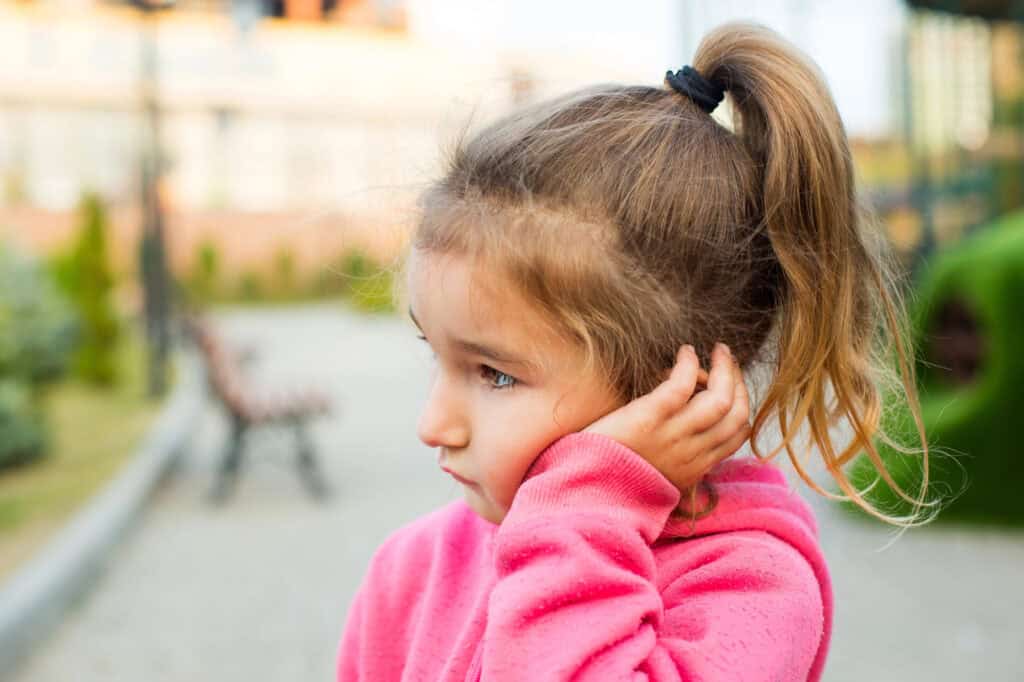By Carter Trent
EDITOR’S SUMMARY: Antibiotics transformed modern medicine, yet their use in early childhood carries consequences that researchers continue to uncover. A major 2025 Rutgers investigation linked early exposure to elevated risks of chronic conditions. Scientists are examining how these drugs disrupt the developing microbiome and affect systems far beyond the gut. The findings raise urgent questions about prescribing practices and how caregivers can safeguard children’s long-term health.
Antibiotics are often hailed as one of medicine’s greatest breakthroughs. Their story begins with Alexander Fleming’s discovery of penicillin in 1928. But when Fleming accepted the Nobel Prize in 1945, he offered a stark warning: “the public will demand penicillin…then will begin an era…of abuses.”His prediction quickly proved true, as he lived to see the drug used for illnesses it couldn’t treat, such as the common cold. In a 1953 New York Times interview, he remarked that penicillin “is being used much too much in every country.” Leap ahead: in the first two decades of the 2000s, global antibiotic use surged by 46 percent. Today, they remain the most frequently prescribed medications for infants and toddlers, with amoxicillin and Zithromax leading the list.
Frequent antibiotic use in children comes with heavy costs for developing bodies. A 2025 Rutgers review, “Early Childhood Antibiotics and Chronic Pediatric Conditions: A Retrospective Cohort Study,”published in the Journal of Infectious Diseases tracked more than one million children who received antibiotics before age two and followed them through age twelve. The findings were striking: early exposure was tied to higher risks of asthma, food allergies, hay fever, and even intellectual disability. And the risk wasn’t static—it rose with every additional course prescribed. The Rutgers study stands out not just for its massive sample size but for the way it accounted for potential bias. The researchers even compared outcomes between siblings to sharpen their analysis. As they explain:
‘“Through careful consideration of various potential confounders, including family history, maternal antibiotic exposure, infections, perinatal factors, and healthcare utilization, as well as through sibling-matched analyses, we controlled for many measured and unmeasured confounders often overlooked in observational studies of long-term effects of antibiotics.”’
On average, more than half of all children receive at least one course of antibiotics, with the peak happening around age two. The most common reason: acute otitis media (AOM), an infection of the middle ear. While antibiotics can sometimes be necessary, research published in 2023 showed that most cases of AOM resolve naturally. Dr. Daniel Horton, lead author of the 2025 Rutgers paper and associate professor of pediatrics and epidemiology at the Rutgers Institute for Health, Health Care Policy and Aging Research notes:
“The truth is, these medicines can be life-saving for some children and adults, but many people who receive antibiotics just don’t need them to get better… Our hope is that this study adds to ongoing efforts to help prescribers and families think about and talk about whether an antibiotic really is needed for a child with an infection to feel and get better.”
Much of this overuse stems not from medical necessity but from precautionary prescribing, time-pressed visits, or parent pressure. That dynamic has kept antibiotic use high even when it’s unlikely to help. The Rutgers findings echo a wide body of research pointing in the same direction. Multiple studies have connected early antibiotic use to long-term health problems in children. Nine scientific papers tied it to food allergies and obesity, two more found a connection to cognitive impairment, and fifty-four documented a marked rise in asthma. It may not be a coincidence that albuterol—an asthma medication—ranks as the third most prescribed drug for kids, just behind the antibiotics amoxicillin and Zithromax. Overuse also fuels antibiotic resistance, creating so-called “superbugs” that are harder to treat and pose risks well beyond childhood. One of the most concerning findings was the link to intellectual disability—a condition defined by the U.S. Centers for Disease Control and Prevention as a limitation in a person’s ability to learn at the level expected for their age. The agency explains:
“Children with intellectual disability might have a hard time letting others know their wants and needs, and taking care of themselves. Intellectual disability could cause a child to learn and develop more slowly than other children of the same age. It could take longer for a child with intellectual disability to learn to speak, walk, dress, or eat without help, and they could have trouble learning in school.”
Dr. Martin Blaser, co-author of the Rutgers study and director of the Center for Advanced Biotechnology and Medicine at the Rutgers School of Public Health, also collaborated with the Mayo Clinic in 2020 on research that tied early antibiotic exposure to chronic health risks. The study followed 14,572 children, 70 percent of whom had received at least one antibiotic by age two. The findings connected antibiotic use in those early years to asthma, allergic rhinitis, atopic dermatitis, celiac disease, obesity, and attention deficit hyperactivity disorder. As Dr. Blaser emphasizes:
“The general mantra with the overuse of antibiotics is ‘this may not help, but it won’t hurt.’ But that’s why we’re doing studies like this. We’re now providing evidence supporting the hypothesis that they do hurt, and the risks are cumulative.”

How antibiotics can harm the body
The weight of this research not only reveals troubling outcomes but also raises a deeper question: how do antibiotics set the stage for lasting health problems? To answer that, it helps to understand how they work. These drugs target bacteria in two ways: by stopping them from multiplying and by killing them outright. Bacteria themselves are microscopic organisms that can cause infection, but most aren’t harmful. In fact, many are essential, teaming up with other microbes to support digestion, immunity, and hormone balance. The trouble is, antibiotics don’t discriminate. They wipe out the harmful bacteria but also the beneficial ones your body depends on. When those vital microbes are destroyed, the functions they carry out are disrupted—and that’s where problems begin.
The body’s largest microbial colony lives in the gastrointestinal tract, better known as the gut microbiome. These microbes don’t just help digest food—they also shape the brain through what’s called the gut–brain axis. They regulate brain development, influence emotions, and communicate through pathways like the vagus nerve, which runs from the brainstem down into the abdomen. This connection sheds light on why intellectual disability has emerged as one of the potential consequences of antibiotic use. A 2024 study in primates showed how antibiotics disrupted the balance of gut microbes vital to brain function, leading to measurable behavioral changes in the animals. Dr. Horton describes how antibiotics disrupt beneficial bacteria—and why that disruption can be so harmful in children. He states:
“The human microbiome—the trillions of bacteria and other microbes that live in the gut, on the skin and elsewhere inside and outside our bodies—expands and matures rapidly over the first two to three years after birth. Many important systems in our bodies develop and mature at the same time, including the immune system and the nervous system, and the microbiome is thought to play an important role in how these body systems develop and mature.”

Natural Medicine and Antibiotic Recovery
There are ways to protect and support children’s health—approaches that begin long before illness strikes. For parents and caregivers, it helps to know there are options beyond antibiotics. Breastfeeding for at least six months has been shown to lower the risk of infections like AOM, thanks to the natural antibacterial properties in breast milk. Other preventive measures have also shown promise. A study published in the Pediatric Infectious Disease Journal, “Vitamin D Supplementation Reduces the Risk of Acute Otitis Media in Otitis-prone Children,” found that vitamin D supplementation significantly reduced the likelihood of children developing these ear infections.
Since AOM is the leading reason antibiotics are prescribed, parents who prefer not to take a “wait and see” approach can consider integrative treatments. Acupuncture, for example, is known to help clear fluid from the middle ear. Herbal treatments such as garlic mullein oil drops have also been shown to ease pain and promote healing. And something as simple as a warm compress can bring relief by relaxing muscles and improving blood flow. If antibiotics become necessary, steps can still be taken to safeguard health. Natural remedies—such as turmeric and ginger, both known for their antimicrobial properties—can be used alongside the guidance of a holistic medical practitioner.
When an illness truly requires pharmaceuticals, it doesn’t mean the situation is hopeless. A child’s microbiome can recover with the right care and support for restoring beneficial bacteria. While some microbes are lost, others carry genes known as resistomes, which allow them to withstand antibiotics and repopulate naturally over time. One key point: antibiotics reduce not only the number of helpful microorganisms but also their diversity. That’s why probiotics can be key in rebuilding a healthy microbial community. That said, using probiotics after antibiotics is not one-size-fits-all. Recovery of the gut microbiome can take weeks or months, depending on the strain of probiotic, the type of antibiotic, and the individual’s unique microbial makeup, according to a 2025 paper from North Carolina State University, “Probiotics Can Help or Hinder Gut Recovery After Antibiotic Treatment.”
Some probiotic strains may speed recovery, others may actually slow it, while a few don’t colonize the gut at all—instead, they encourage the growth of beneficial bacteria already there. The study explains that rebuilding the body’s microbial community is a complex process, and much remains to be learned about how the microbiome truly works. Rather than relying only on probiotic supplements—which contain a limited number of strains—it’s wise to emphasize a wide variety of probiotic and prebiotic foods. These nourish the beneficial bacteria in a child’s gut and help restore balance. Good prebiotic sources include leafy greens, legumes, nuts, bananas, apples, berries, oats, and broccoli. For probiotics, look to kefir, sauerkraut, and other fermented vegetables. When choosing products, pick those made with live cultures.
Another way to support a child’s gut health is simple: spend time in nature. Activities like gardening or hiking expose the body to friendly microbes that enrich the gut ecosystem. Research shows that the environment may shape the microbiome even more than genetics. People who are unrelated but share the same home often have gut microbes more alike than relatives who live apart. Other studies have also found that greater plant variety in the surrounding environment correlates with a wider range of bacteria in the body. The same holds true for being around animals. Studies show that children in households with pets develop a broader range of protective bacteria, as microbes are shared between owners and their animal companions. This exchange tends to lower harmful bacteria while boosting health-promoting strains.
The road ahead
Nearly a century after Fleming’s warning, the lesson is clear: these powerful medicines save lives, but their misuse can shape health for years to come. The 2025 Rutgers research underscores the need for greater awareness, careful prescribing, and informed choices by caregivers. It also challenges families to look beyond convenience or quick fixes and to question conventional practices when treating illness. At the same time, antibiotics remain indispensable in fighting life-threatening infections such as sepsis, meningitis, and pneumonia—circumstances where they are not just useful but vital.
With thoughtful care—and with respect for the remarkable complexity of the human microbiome, especially in early childhood—families can support developing body systems to flourish. Recognizing the long-term effects of antibiotics empowers both providers and parents to make wiser decisions. That awareness opens the door to stronger, healthier futures for children.
~
Published on October 02, 2025.
If you’ve found value in this article, please share it!
To support the research and health education of AVFC editorial, please consider making a donation today. Thank you.


